Good to know
Danish Wedding Customs & Traditions
ADDING A LITTLE BIT OF EXTRA TO YOUR WEDDING DAY
Denmark is a country rooted in tradition and Danish wedding rites and customs can be traced back to the Viking age where the joining of two families through marriage was regarded as a serious business not to be taken lightly. Luckily, the business aspect of Bride’s Fees and dowries and the principles of arranged marriages are no longer practised in today’s Denmark, but the joy and fun of a wedding celebration remains.
Here are a few Danish wedding traditions that soon-to-be married couples on Bornholm might, or might not adhere to.
Proposal and Engagement
Unlike the Vikings, Danish couples today no longer ‘ask’ their parents for permission to get married – though some grooms might still ask the bride’s father for ‘the daughter’s hand in marriage’.
On the whole, however, the engagement itself increasingly has become solely an agreement between two people in love and willing to spend the rest of their lives together.
The engagement ring is not strictly speaking a Danish tradition, but American. yet it has become part of the pre-marriage ritual between betrothed couples. The engagement ring is usually worn on the left hand, while the wedding ring sits on the right.
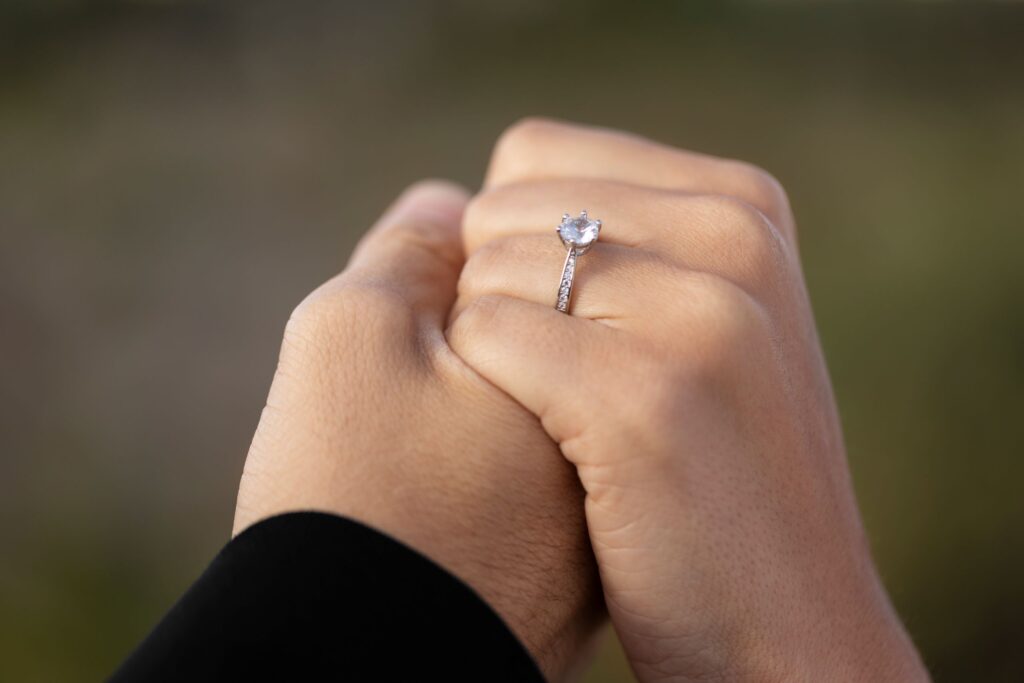
Hen and Stag Party
The Danish know how to throw a party and the Hen- and Stag-Dos ahead of the wedding, in Denmark called Polterabend, offers a special occasion to show their partying skills.
Polterabend derives from the German and means ‘a noisy evening’, and according to tradition, the guests during the evening will make as much noise as possible to scare evil spirits away from the happy couple. Until the 1980s only the groom celebrated the end of his bachelorhood together with his male friends this way, but in the last 40 years the bride and her girlfriends threw their own events.
Traditionally, the Stag Party is organised by the groom’s best man while the arrangements for the Hen-Do fall to the first bridesmaid. Changed has also the tradition of having the Polterabend the night before the wedding to keep the bride and the groom away from each other. Nowadays, Polterabend is held well in advance of the wedding to avoid too many sallow faces and unsteady legs among the wedding guests.
Bornholm has a lot to offer if you should plan to have your Hen & Stag Party here – from spas and food tastings to adventure trails and picnics away from the beaten track. We in Wedding on the Rock would be happy to assist you with ideas and bookings for your very special do.
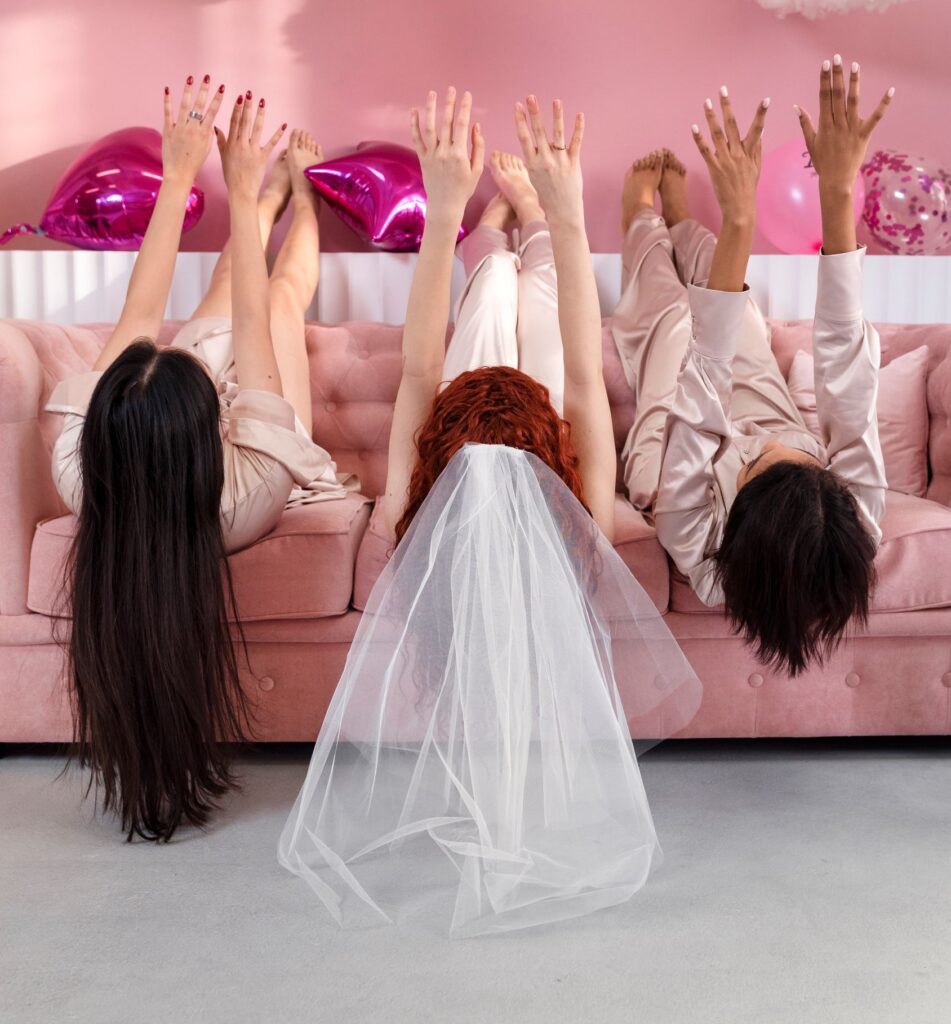
Gate of Honour (Æresport)
Despite the Polterabend no longer being the norm exactly one day before the wedding, friends and neighbours of the couple will still be kept busy on the last evening.
According to Danish wedding traditions, they will meet up to assemble the Arch of Honour, called Æresport, as a surprise for the bride and the groom.
Æresport are beautifully decorated archways with flowers, greenery and ribbons fastened at the front door of the couple’s residence to welcome them into married life. In some circumstances, the Æresport is placed at the entrance of the location the wedding reception is held at.
Disregarding on where they are in the end, the Gate of Honour will always be wonderful Danish wedding ritual, and a lovely declaration of love from the friends of the couple to the newly weds.
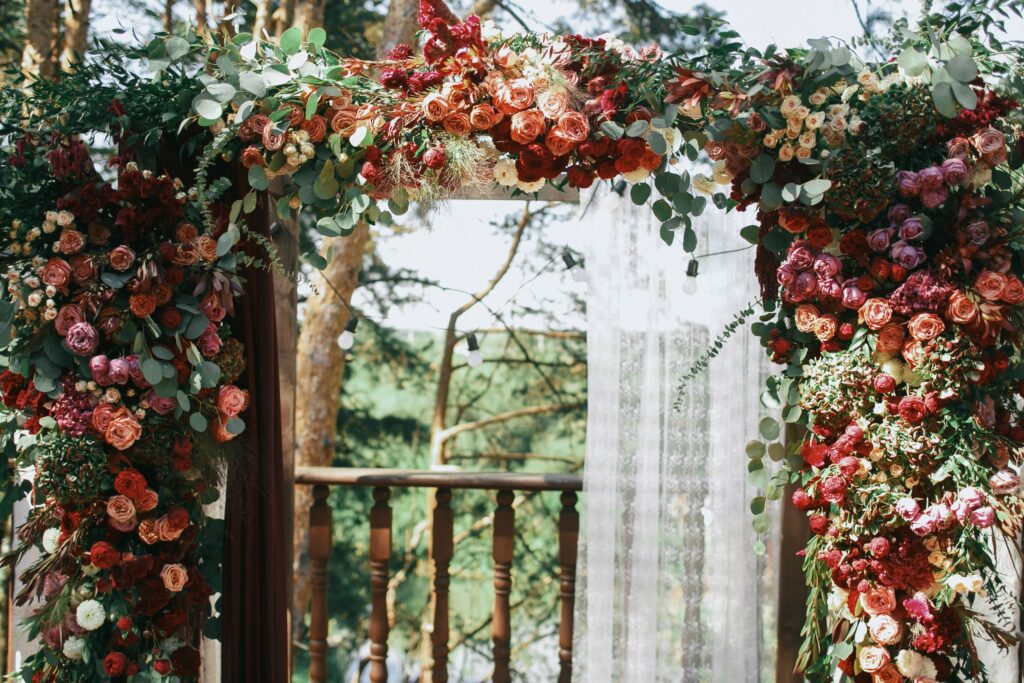
The Wedding Bands
While engagement rings are not a Danish tradition, wedding bands very much are. Already the Vikings exchanged rings – and not only bands worn on their fingers, but also an additional two rings carried on their arms.
In today’s Denmark, two rings will do and as Bornholm is home to a large community of artists, jewellers included, you might even find a set of special wedding bands exclusively for you.
There is, however, no Danish law requiring you to exchange wedding bands during the ceremony. If rings are not really your thing – for professional or personal reasons – you can always revert to the Viking tradition of carrying them on your arms: in the form of beautiful watches.
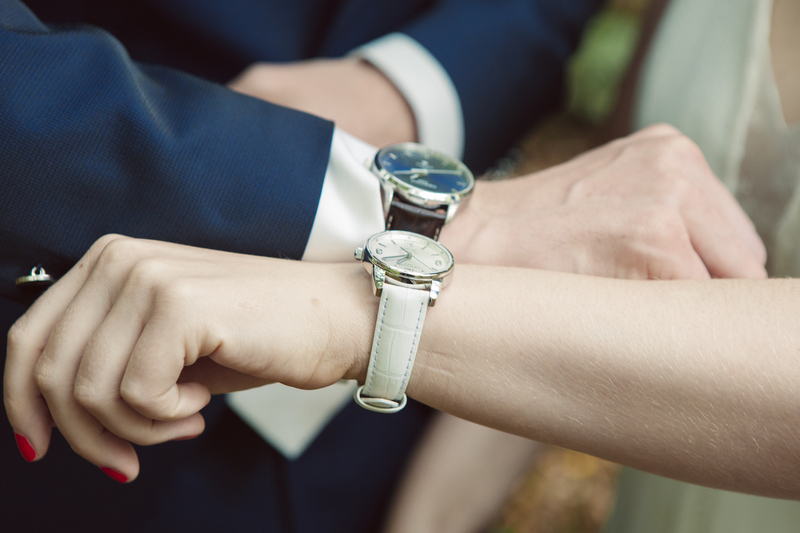
The Wedding Reception
Once the couple has exchanged their vows and can be regarded as married, they will leave for the chosen location of their wedding reception where the banquet is held.
Though Danish cuisine is renowned and especially Bornholm has much to offer with regards to food, the guests of the happy couple will do their best to keep the newlyweds from eating. They will demand action in the form of kisses and to get what they want, all they have to do is to bang their cutlery at the tableware. The couple then have to climb on their chairs and kiss. However, if the guests stamp their feet, the couple must kiss under the table.
As if this is not enough, the wedding guests also will demand their fair shares, for whenever the bride or the groom leave the room for a short while, the attendees will descend upon the remaining partner and kiss him or her – though rather chastely on the cheeks.
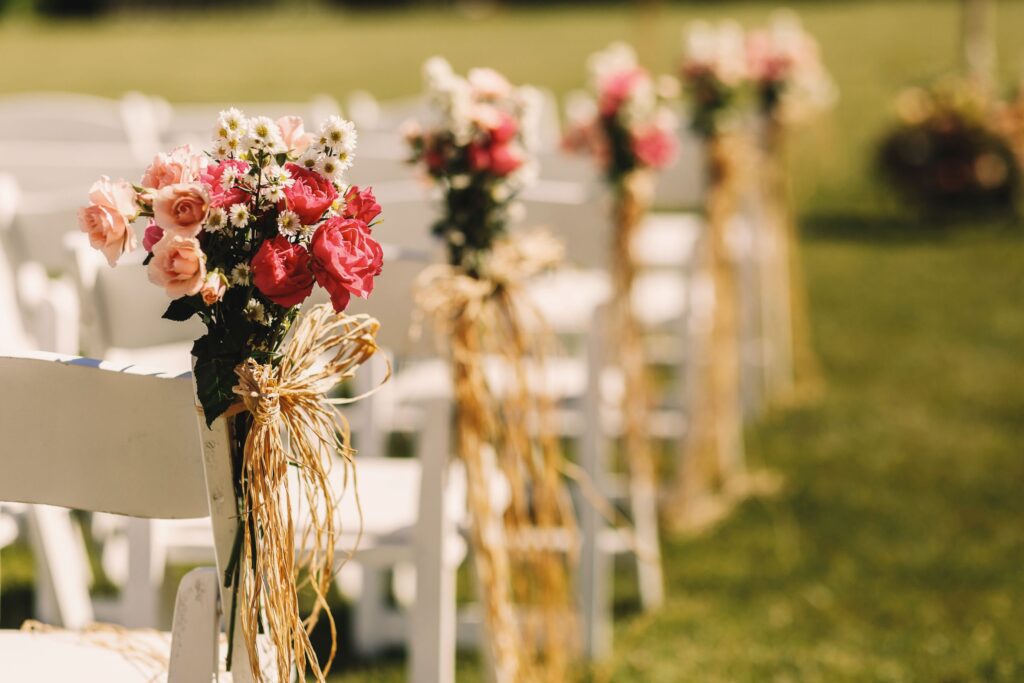
The Wedding Cake
At Danish weddings, the international custom of the tiered wedding cake covered in icing has become more common, but traditionally a wedding banquet in Denmark would include a ‘Kransekage’ – which translates into ‘wreath cake’.
This labour-intensive tower of rings in various sizes consists of an almond meringue dough with a mellow centre, provided it is baked correctly. If the bride and groom want to go one step further, they can order the Kransekage in the shape of a cornucopia (Overflødighedshorn) with sweets and pastry spilling out of the opening, thus providing a sensational focal point and additional decoration to the wedding banquet table.
Whether it is a tiered wedding cake or a Kransekage – also in Denmark the bride and groom will cut the cake together.
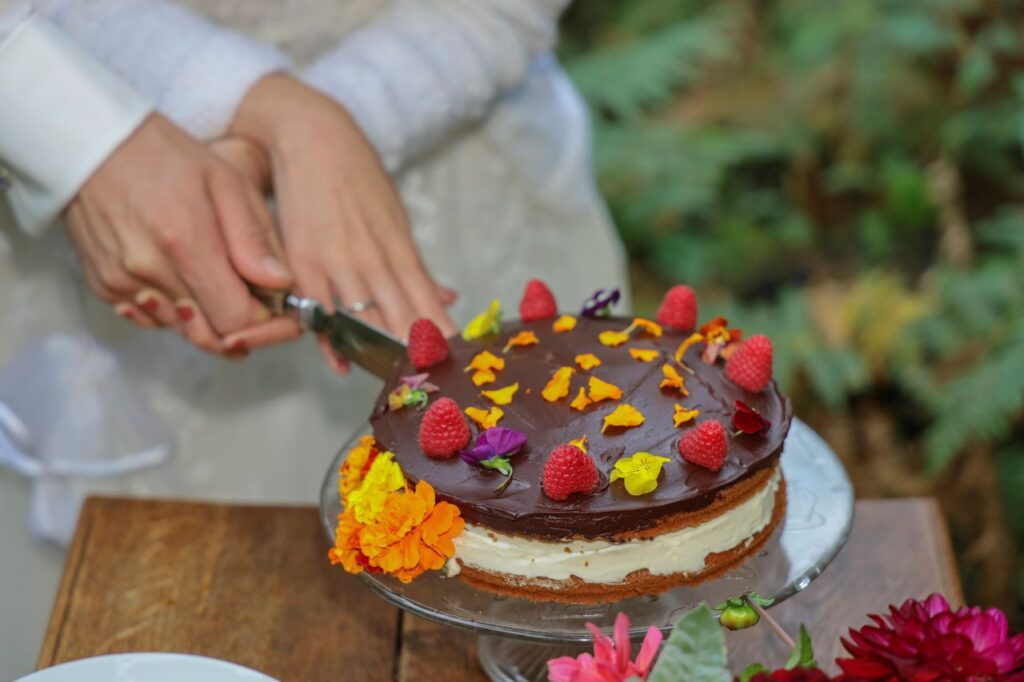
Cutting Off the Groom’s Socks/Tearing the Bride’s Veil
Among the most action-filled wedding traditions for most guests will be the cutting of the groom’s socks. Any husband-to-be will on the morning of his upcoming betrothal be very careful on what he wears on his feet – for once the first dance at his own wedding is over, the fun begins.
The Danish wedding dance will always open with a waltz performed by the bride and groom. They will have to keep a close eye on the clock, because the waltz has to be done before the clock strikes midnight in order to avoid bad luck.
Once finished, the groom inevitably will be lifted by the guests, who will pull off his shoes and cut the toe end of his socks. And while he reels from the friendly attack, also the bride will not get away without a certain amount of damage to her wedding attire, for a piece of her veil will mean good luck for whoever manages to grab a fragment.
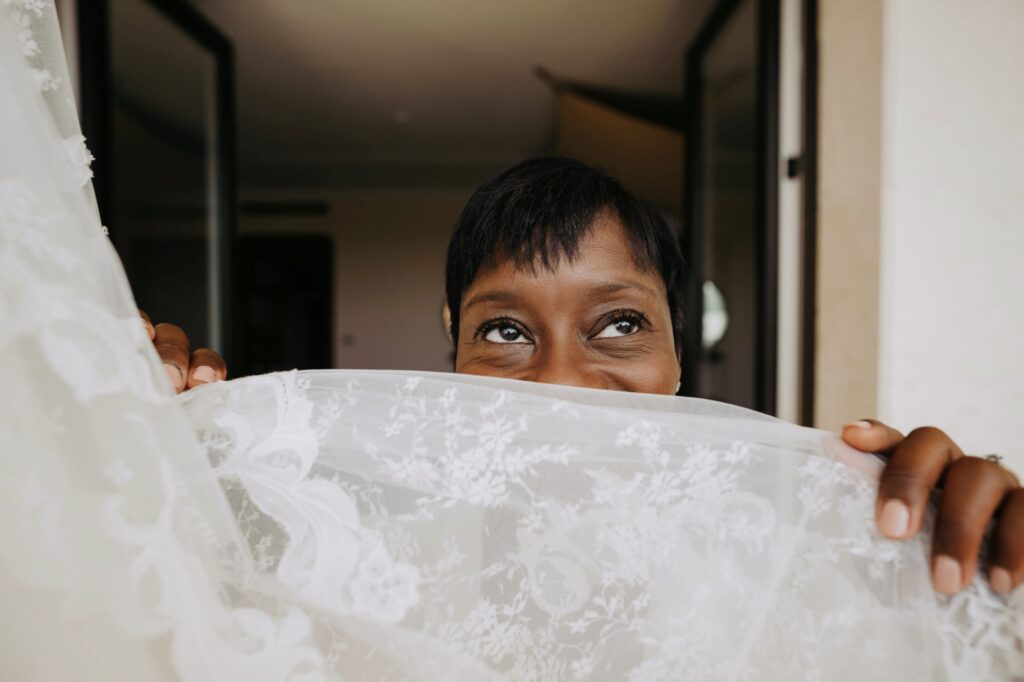
Wedding Pranking
Also Danish wedding guests might engage in pranking the couple while their attention is drawn to other matters, such as opening the wedding presents or entertaining friends and relatives.
Close members of the family, usually brothers and sisters, as well as the closest friends of the newlyweds will secretly go to the house or location the couple will spend the night in to play a few harmless practical jokes.
These can include (but are by no means limited to):
- stuffing rooms with balloons or shredded paper
- removing light bulbs
- swapping around or hiding necessary everyday items
- placing unusual surprises into the marital bed.
There is no limit set to the imagination of the wedding pranksters, but it is important to note that nothing in the house and among the possessions of the newly married should receive lasting damage or be in need of repair once the mess has been discovered.
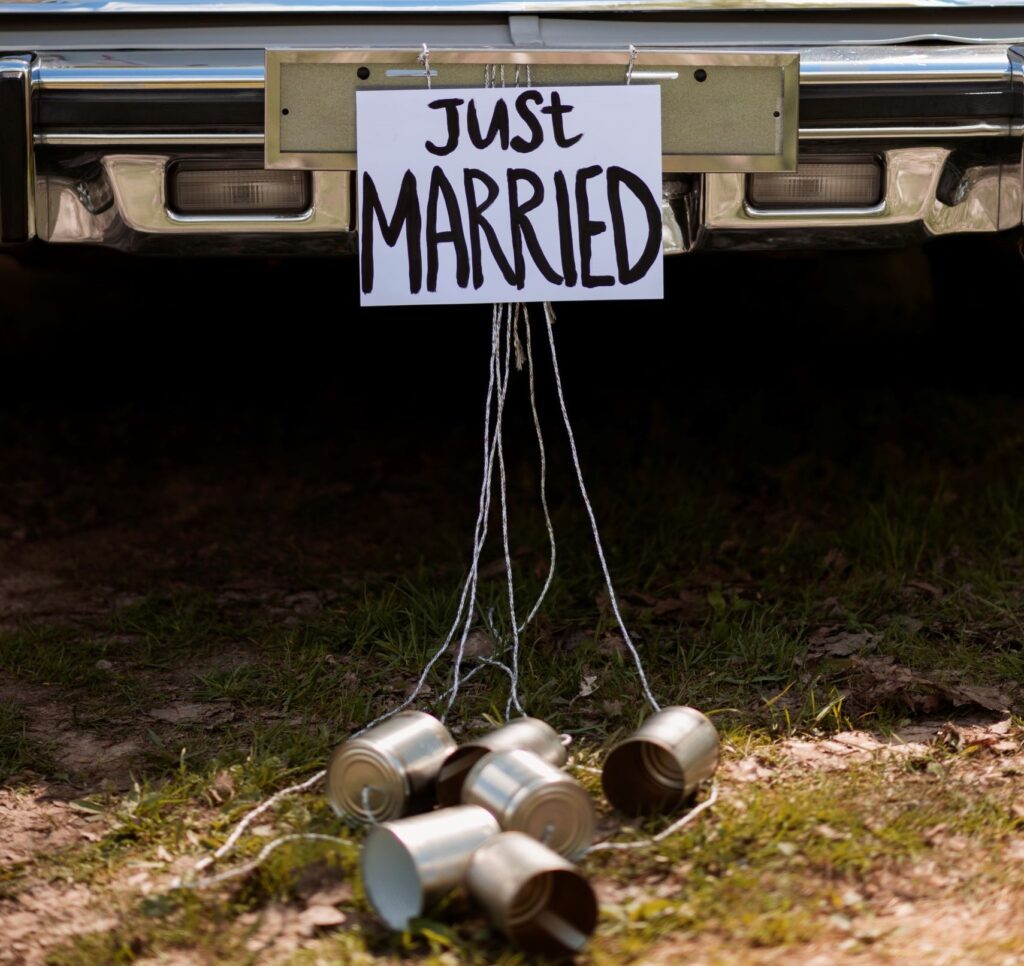
Book an online meeting
Book a free online meeting with one of our experienced wedding planners and have all your wedding planning questions anwered.
